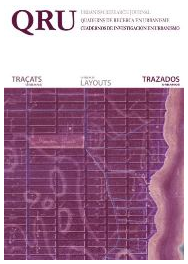Las medidas de los trazados ortogonales
DOI:
https://doi.org/10.5821/qru.9575Abstract
Many of the cities we know have their origin or subsequent extension project based on a regular layout. This is one of the most common and fortunately used urban growth patterns and the diversity of solutions that has given rise enriches the town planning history treatises. Plots, building typologies, streets, avenues, and blocks of different sizes, are combined in rich and diverse proposals, where the only common feature seems to be the use of a rectangular layout, with the consequent rationality, serialization, extension and transformation capacity. In this paper we analyse essentially the shape and measures of these projects (street size, width and depth of the block, its surface and the total extension), in order to verify if there are certain constants among these dimensions, or significant relationships between them, perhaps more appropriate measures, in order to built a more functional, cheaper or beautiful city.Downloads
Issue
Section
License
Those authors who have publications with this journal, accept the following terms:
a. Authors will retain their copyright and guarantee the journal the right of first publication of their work, which will be simultaneously subject to the Creative Commons CC BY-NC-ND-4.0 recognition license that allows third parties to share the work provided that its author and its first publication are indicated in this journal, but they cannot be changed or used commercially.
b. Authors may adopt other non-exclusive license agreements for the distribution of the version of the published work (eg: deposit it in an institutional telematic archive or publish it in a monographic volume) provided that the initial publication in this journal is indicated.
c. Authors are allowed and recommended to disseminate their work through the Internet (e.g. in institutional telematic files or on their website) before and during the submission process, which can lead to interesting exchanges and increase citations. of the published work. (See The effect of open access).













